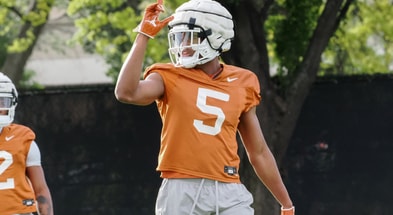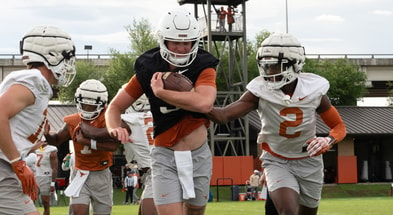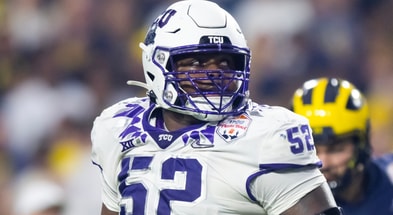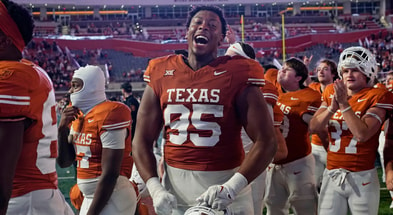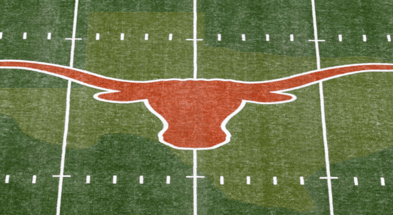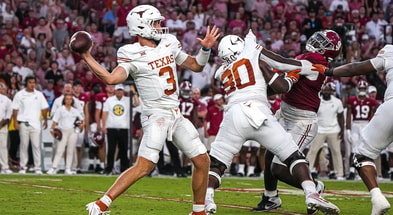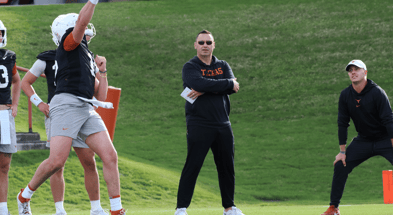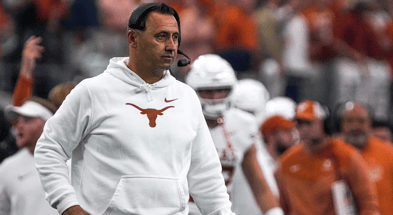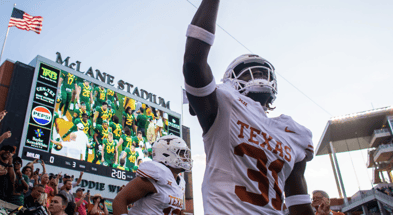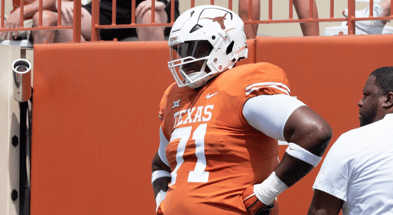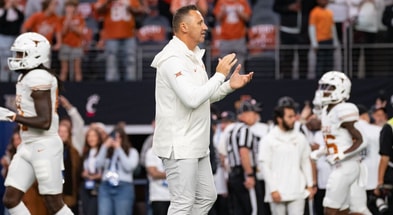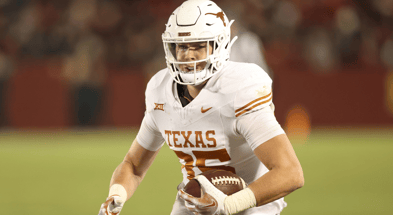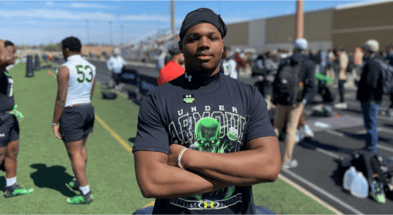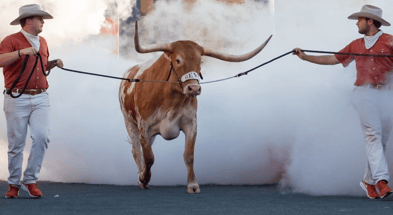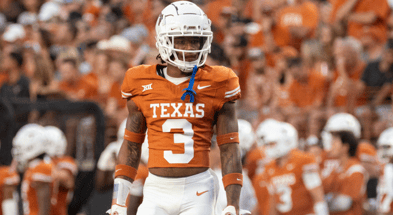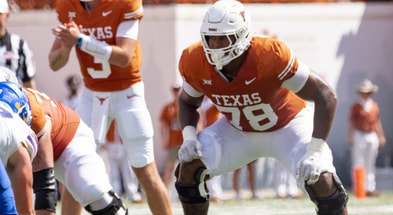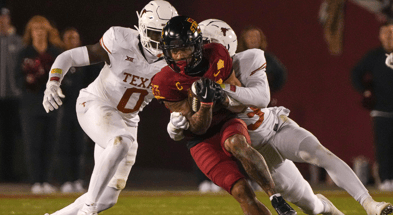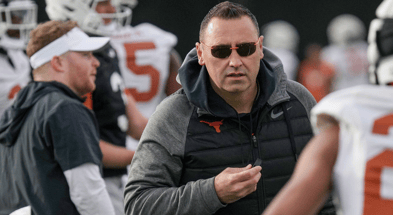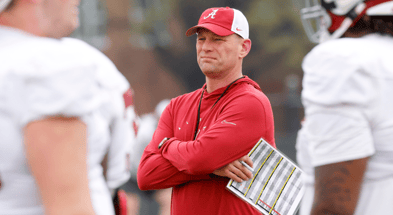A salvaged Big 12? Part II, the arbiters of fate
The internet content mines are absolutely churning out takes these days about the future of the Big 12. There’s so much intrigue, so many options, and so much to discuss. My own mining process, while inexact, is different enough I figure I might as well offer you some of the raw product I’ve managed to extract.
The other day the Pac-12 conference put out an interesting statement. The Pac-12 is now a member of the new “rebel alliance” which seems to be a goodwill agreement by the Big 10, ACC, and Pac-12 to try not to allow the SEC to keep pushing them around as they did during COVID and will continue to do with Texas and Oklahoma now in the fold. Here was the statement:
A statement like this could be read a number of ways. It came recently after Dave Wannstedt of Fox Sports said the Pac-12 was looking to expand by adding Oklahoma State and Kansas State.
There’s an awful lot to parse here. The timing of the Pac-12 statement certainly seems timed to counter the narrative created by Wannstedt’s report. You could certainly understand why the Pac-12 conference would be eager to quiet down any such report. More on that in a moment, let’s get one more detail out there.
The reason everyone is making a big deal out of this is USC is one of the biggest, most important, and most serious football powers involved in the rebel alliance. They are the biggest program in the biggest state and located in the nation’s second biggest metroplex. How committed are they to the rebel alliance?
At the heart of this all is a battle between academics and businessmen
The battle over playing football during COVID in 2020 essentially fell between schools who treat college football as a serious business venture (the SEC, much of the Big 12 and ACC, etc) and those who want to keep it subservient to the interests of the academy (the Big 10 save for Nebraska and Ohio State, much of the Pac-12). The Big 10 made a big public push to prevent college football from happening driven by the concerns over myocarditis which didn’t withstand to serious scrutiny.
The SEC called their bluff, brought in the ACC and Big 12, and the Big 10 and eventually Pac-12 had to fold their hands and rush into some sloppy seasons of football after pretending to resolve the COVID concerns.
It should be noted here Texas used to be run by President Bill Powers, who was a Cal Berkely alum, and is now managed by Jay Hartzell who is a graduate of the McCombs business school at Texas, and lead regent Kevin Eltife, who’s a Republican. I’m not trying to drag politics into this just noting the power brokers at the University of Texas are different than we saw in the previous decade, hence the pursuit of Urban Meyer and hire of Steve Sarkisian with his SEC staff, as well as the move into the SEC. They aren’t going to subordinate the athletics program to the academics and were a big part in pushing for the 2020 season to occur. Obviously Oklahoma ain’t about that “let’s not over emphasize football” life either.
An alliance between the Big 10, ACC, and Pac-12 could serve to give the academic programs some additional clout to prevent the SEC from completing college football’s transformation into “minor league football.” Expansion adding Big 12 schools to those conferences, particularly adding Big 12 schools like Oklahoma State to the Pac-12, would have the opposite effect. It would add more programs into the Pac-12 who’d be keen to treat football more like a business or professionalized league and aren’t interested in bowing to the concerns of academics in keeping up a relevant program.
Now, let’s revisit the timeline with this interpretation of events.
Step 1: The rebel alliance is formed
This isn’t difficult to interpret. It’s a move to counter the growing power and influence of the SEC after they added big market, serious players Texas and Oklahoma, as well as trying to check the influence of Big Mouse (Disney). None of those conferences have the same power in the TV deal world as the SEC but, “with our powers combined!” perhaps they could summon Captain Planet to rescue them from having to simply do whatever they were told.
Step 2: Wannstedt suggests the alliance conferences could expand by adding Big 12 schools
Again, Wannstedt works for Fox Sports who is also surely keen to try and check the growing power of the SEC and Big Mouse. Not on behalf of helping academics maintain control of this rapidly involving collegiate sports venture, but in their own interests as shareholders. Fox Sports can’t be excited about the growing number of college football properties owned by Big Mouse, they just lost their Big Noon Saturday ticket!
But let’s pause and talk about the proposal. It was:
-West Virginia to the ACC
-Kansas and Iowa State to the Big 10
-Oklahoma State and Kansas State to the Pac-12
West Virginia to the ACC has always made sense, if the ACC was interested. There’s no doubt it’d be better for West Virginia, better even than the Big 12 before Texas and Oklahoma left. All of their traditional recruiting, rivals, and local peers are in the ACC and not the Big 12. They were hoping to get in last round and lost to Louisville. Everyone assumes this move could happen should the ACC be looking to expand for any reason (absorbing Notre Dame?)
Kansas and Iowa State to the Big 10 makes a certain degree of sense. They’re both AAU-credited institutions, which maintains the Big 10’s emphasis on academics, they are both comfortably in the Big 10 west “heartland/Midwest” region (currently including Minnesota, Illinois, Iowa, Nebraska, etc), and they each have a little something to offer. The Cyclones have some dedicated fans, currently have one of the nation’s best coaches, and already play Iowa annually. Kansas has a national basketball brand, strong academics, and are now trying to demonstrate they are capable of running a football program at a P5-level. Why would the Big 10 add them? I’m not sure, but if they needed more members for any sort of TV contract purposes then these two are probably among the first in line now Texas and Oklahoma are out.
Oklahoma State and Kansas State to the Pac-12 doesn’t really make any sense. If you want to add schools to the Pac-12 from the Big 12, the reasoning would probably be to expand into the Lone Star state with its booming demographics and television sets and to add more programs who are serious about football to help USC or Oregon prevent Cal and Stanford from shutting down the season or handcuffing them from competing nationally with their academic priorities.
Oklahoma State and Kansas State each check off just one of those boxes. I’m not saying neither would add any value to a Pac-12 super conference, but I can’t even begin to imagine why the league would include either over Texas Tech. If you told me the Pac-12 was seriously considering adding two Big 12 teams I’d say, “oh, they’re adding Oklahoma State and Texas Tech then? Best of luck to them out west.” If you told me they were adding four I’d assume TCU was fortunate enough to get into the mix and maaaaybe Baylor, I’d also be fairly shocked.
Also, who’s in charge of the Pac-12 anyways? The businessmen or the academics?
Step 3: The Pac-12 releases a statement saying expansion isn’t on the table
That’s a pretty clear signal about who’s in charge and what the priorities are. The priorities aren’t playing the SEC’s game in building a minor league football conference, but maintaining leverage for the less football-intense academic institutions. If they wanted to expand the business and include more intense football programs, they probably wouldn’t be speaking openly about ruling out expansion.
And then you get this…
Step 4: It’s reported USC has finalized the scheduling of uber-SEC program LSU
I should note here LA Times columnist Bill Plaschke was saying recently USC should unshackle itself from the Pac-12 and go independent. The notion of protecting the Trojan tradition by creating flexibility to keep up with the SEC’s influence on the game is very much out there in the public sphere. Is USC excited or on board with the rebel alliance and trying to preserve the old model of college football as a piece in service of the academy? Or would they rather stay current with the evolution toward professionalization of sports down to the lower levels we have long seen in Europe with their approach to soccer and basketball?
I could very easily be wrong but I think we’re witnessing a power struggle, even within members of the rebel alliance, over the future of the sport and more importantly, who’s in charge of it. We could be making a mountain out of a molehill here, presumably USC has been in talks with LSU over this for a while, but the timing of the reporting certainly made the rebel alliance look weak.
So what’s next for the “irate eight” of the Big 12?
I was going to write a piece about Big 12 expansion rumors, and touch on some suggestions and numbers I already spoke to in this piece:
Overall I think the Big 12 is essentially just floating in the wind, waiting to see who wins the power struggles between the business people, Fox Sports and ESPN, and the academics. The winner will determine the fate of the irate eight, this much is clear. Will the Big 12 be like the feather in Forrest Gump, guided along to impact history and lead a rich life? Or the plastic bag of Katie Perry’s imagination in “firework?” Hoping for another chance at usefulness?
The Big 12 could potentially add BYU and Boise to get back to 10, you assume those schools may be willing to jettison their current situations, but I think poaching from the AAC may be harder than is being projected. The AAC schools are already in the pocket of Big Mouse with a new TV contract signed in 2019. While the Big 12, after expansion, could theoretically sign a bigger contract than ESPN handed to the AAC because of possibly bigger draws like Oklahoma State or Texas Tech…they can’t offer anywhere near the same stability. Especially when the bigger draws in the Big 12 would clearly bolt for the Pac-12 or Big 10 should Fox Sports or Oregon wrest control and seek to change the dynamics of those leagues with expansion.
Over at Sicem365, Sam Bradshaw did a really thorough analysis on TV ratings to demonstrate the Big 12 should be the poacher, not the poached, when it comes to the AAC conference.
There are these hangups though. How stable is the Big 12 partnership? The reason the Big 12 was formed was to tie Big 8 schools to the TV market riches of the state of Texas. Ultimately the imbalanced partnership with the University of Texas proved distasteful to much of the Big 8 so they scattered, leaving behind only schools who were even more unequally yoked such as Baylor, fresh addition TCU, the Kansas’ etc. More recently it was Texas (and Oklahoma) who found the imbalance distasteful and bailed.
Additionally, the AAC television ratings stand on their own. They’ve proven their existing programs, playing for their existing stakes, can command the dollars Big Mouse recently stuffed into their pocket. What would Big 12 ratings look like if Texas and Oklahoma are no longer affiliated? Will college football fans still watch Baylor play TCU at the same numbers if a P5 championship isn’t at stake? How much interest from these schools’ own fanbases is contingent on the fact they play P5 level football? Would Kansas State or Baylor even command the current level of local and alumni interest playing against non-Texas/Oklahoma opponents?
Needless to say Texas and Oklahoma fans are less likely to watch Big 12 games not involving their programs in the future, instead tuning in to watch SEC opponents. The chances of the Big 12 schools maintaining their current numbers, even subtracting Texas and Oklahoma games from the equation, are very low.
It’s not an apples to apples comparison and it’s not clear the Big 12 is actually strong enough to poach from the AAC, certainly not before some questions are settled about the commitment level of potential expansion candidates.
What will happen next is most likely the settling of terms on Oklahoma and Texas’ withdrawal. Those schools would like to expedite the process ASAP, as would Big Mouse, and the only hangup on the Big 12 end is getting as much money from the exchange as they can.
From there? They need to hope things are cleared up enough they don’t have to do anything drastic, or sign on for something unstable. In the meantime, at least there’s a compelling football season coming on soon to watch as we wait.
